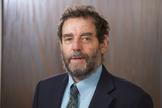Technology helping poor countries manage their disease burden
Technology can't do everything to help poor countries manage their disease burden, but it could enable more efficient systems that can be built around individuals. A good example is the tracking system developed in some African states for patients who follow treatment regimes for tuberculosis.
In Chad digital biometrics are being used to monitor the health status of nomadic populations, who might not keep or understand any form of paper ID. Official identification in most developing countries is relatively low: overall something like 50% and in Zambia only 9% of the population have official birth certificates.
Although developing countries are low on traditional official identifications such as birth certificates, they are one of the biggest uses of biometric identification. The comparative advantage of developing countries is that they have fewer legacy systems, relative to the developed world, and can therefore implement and benefit from emerging technologies far more easily.
Africa is the fastest-growing mobile telephone market in the world and the biggest after Asia. Over the past five years the number of subscribers on the Continent has grown some 20% each year. By the end of 2012 it is projected that Africa will have 735 million mobile subscribers.The nature of Africa’s mobilemarket is also changing. Today, smart phone penetration rate in Africa is estimated to be about 18%: almost one in five and projected to reach 40% by 2015. While patchy, mobile penetration rates in Sub Saharan Africa, where the disease burden is greatest, are not low and the rate of smart phone penetration is estimated to be about 20%.
In 2007 Sarafaricom, a leading mobile phone network in Kenya, launched M-Pesa, a mobile phone‐based payment and money transfer service for people too poor to have a bank account. M-Pesa spread quickly and has become the most successful mobile phone‐based financial service in the developing world. Today there are some 17 million registered M-Pesa accounts in Kenya. It is only a small step to offer a mobile health information service for all M-Pesa account holders.
Africa’s new highways to carry healthcare information are virtual rather than physical. They already exist, they are extensive and, over the course of the next five years, are projected to rapidly expand and improve. With such an infrastructure one teacher can educate millions of people, which is significantly more cost effective and sustainable than traditional healthcare programmes.




Comments